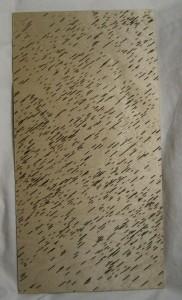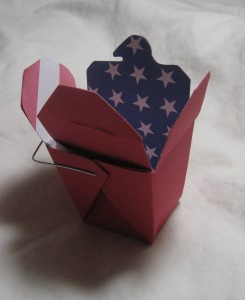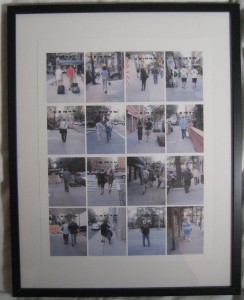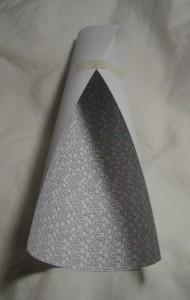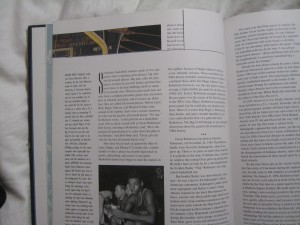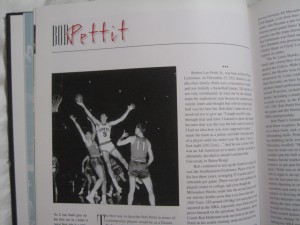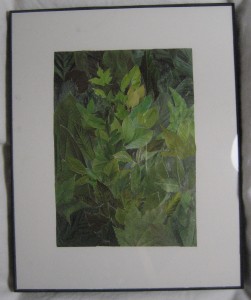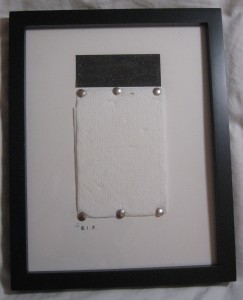“You Are Not a Gadget”
by Jaron Lenier
I found myself agreeing for the most part with Jaron Lenier, and sort of tapping my head with others. People can find ways to get creative, even if you give them limitations, and although I think Lanier has good intentions, he sort of idealized and sentiments the early days of the internet, when the web consisted of solid color Tripod and Geocities sites. Lanier never makes note of the things that always existed, how hackers and trolls have always been apart of the landscape, and have just sprung up in bigger numbers since the web has been made more accessible. There’s nothing about these elements that are going to go away. Rather, designers need to figure out how to work with and against these problems.
“The Power of Presentation” and ““Natural Interfaces are not Natural”
by Donald Palmer
I think this was a really fascinating read on how people are afraid to question the material they are presented today and at one point in history, this wasn’t always the case. Reading was almost like an exercise, and people were allowed and encouraged to debate material.There was a part in the reading where he said that readers today just judge a good book based on something that they couldn’t put down from beginning to end, but during the Medieval Ages, readers use to be forced to read text and look beyond it, and that they would be forced to come up with compelling arguments or to build debate skills. I feel like we’ve regressed back somehow, we’ve lost the ability to imagine and think on our own. It’s depressing how people sort of absorb theories without questioning them, no matter how harmful they may actually be.
I admit that I never knew there were different gestures in different cultures. However, I’m surprised in myself that I could NOT know something like that, it seems so simplistic, that it would make sense a system built on these recognized gestures wouldn’t work for most people, especially in a Western imperial country with diverse faces. I think if I were to design an interface, I would have to rethink how to approach developing a user face that works around this.
On the subject of Wii’s, A family member of mines owns a Wii and although I have no personal preference for console systems, I find the Wii’s interface somewhat exhausting to play an hour long game for, to the point where it feels more like an exercise. One could argue this is one of the stronger points of the system, but unfortunately, there are games on the Wii that would work better with a regular controller, in my opinion.
“The Great Wall of Facebook”
by Fred Vogelstein
For a while it seems, there’s been debate on the days of the internet being numbered, and when it’ll turn “corporate”, but I feel like that time must be long overdue. Seeing these companies try to out business each other over the future of the internet and who will be at the center of it is, on one hand nauseating and on another, incredibly completely unproductive towards pushing technology forward.
I don’t think that either site will ever “dethrone”, the other and believe they both have separate visions, and those visions will never cross each other (Even if Google has flirted with the idea of a social networking site, Google Profiles will never replace Facebook). The problem with Facebook is that we surround ourselves with like minded people, so there tends to be a hivemind mentality on there, and people simply don’t want their personal lives to interfere with their online personalities. They rather keep both separate, and they should be entitled to do so. At least, that is how technology has benefited us now. I think Facebook has done itself a disservice with their security holes and privacy breaches and I don’t see Facebook ever being on the same level as Google. As a social networking site, it’s a little more valid than what Myspace was (and no longer is), but at the same time, it’s somewhat soul sucking in that much of the “social” aspects of it feel superficial.
“The Web Means the End of Forgetting”
by Jeffrey Rosen
On the subject of Facebook and how people prefer to keep their online identities and real life separate, this article perfectly illustrates the issue of privacy. On one hand, I blame these companies for wanting to control every aspect of their employees life, and for punishing these people for things they do outside of their work, completely unrelated to their jobs. Articles like these are partially the reason I don’t have a Facebook, so I think the question begs, how do we go about creating a social network that allows us to be social without saying too much?
Privacy is part of the biggest crux of networking sites and something I would have interest in developing as a designer. I think about how we can combat over-sharing information will still being able to hold onto our online identities.
______________________________________________________________________________________
Guiding Questions for Part I:
1) What are some various methods you use to acquire information? What are their advantages and
disadvantages. How does form of inquiry affect the information you receive?
2) What are different ways in which you can represent complex data, the known and the unknown?
Using the data you collect in class, what kinds of systems of meaning are possible?
3) What degree of resolution is necessary to convey important information? How do you prioritize information based on the group identity established? How are these nuances represented in in your map?
Summary:
When my group and I initially approached this assignment, we gathered the data for how our classmates and school commuted by asking how long it took them and what trains they took to be able to commute. From there, we deduced the amount of time and what place these students were coming from. There we created a chart with routes spread all over the area of the school. I think in one aspect, it was visually interesting and better than the initial idea that we had. On another, it was confusing when it was presented to the class. Much of the data wasn’t properly organized and the idea was not fully developed. It somewhat showed in our final presentation. For a rough exercise, it was a concept that had promise, but I’m unsure how much more developed it could have been. I think had we developed the idea further, it would have been boggled down with too much information.
I think, in a way, one of the ways we can present data was a route that we chose, through the lines that represented ideas. But I think that we didn’t take into account time, simply distance. I think if we tried to visually represent time in a way that it could be read and understood by people who even can’t read time, it would be an interesting concept and route to go through. I think, when creating a map, and this was something we didn’t discuss fully in the groups, we need to keep in mind not just the routes that people take to school, but prior, afterwards, and so on. There’s nothing about this data that says anything interesting about the subjects themselves. Based on what we gathered and already knew, there were people that either dormed, lived close by, or just took a train. But what about the personal lives of these people? Where do they go after school? I feel like we could have dug deeper, to make this project a personal statement about time and how people travel. It would have been fascinating to calculate how much the average person travels a day. I think it would make an interesting statement not just about how people can adapt to all kinds of situations, but how resourceful we can be.
Part II: Individual
1) How much are we constrained by “menu-driven identities” when we represent ourselves in the digital world? How do you get beyond a pre-set?
2) In a large data set, what do you choose to emphasis in order to create systems of meaning? How do certain features shape our mental model of who we are and how we relate to others?
Summary:
I think the only way to go beyond a pre-set is to allow the user to create a pre set for themselves. If I were to create a social network, I would make a profile site with simply 1 entry box, and that’s it. You would sign up and have only one entry box where you could write your name, or whatever you wanted, or perhaps put in code if you wanted, and that would be it. The idea would have to be how creative you would get in deciding what to say about yourself or deciding on how to present yourself. I might or might not put a limit on how much you could put in the box, but the idea wouldn’t be to simply put limits but to make your space descriptive but not overly descriptive.
The idea behind it would be this; In reality, people never get a chance to know our names, what we like, and really who we are. But now, because of sites like Facebook, you can easily access information on people without really getting to know them. It creates a sort of weird filter between people where they don’t feel compelled to seek you out, or to get to know you, because anything they could ever want to know about you is on your profile. People “have” friends, but do we honestly engage with half of the people we go out of our way to friend? I think the mark of a good profile site gives people a little mystery without giving away too much info. People aren’t presented with the luxury of a introductory paragraph when they casually meet someone on the street, or being able to tell someone they just met their birthday. If we acted like our Facebook profiles, the world would be a scary place.
But even with all these problems plaguing the site, it’s still one of the most visited sites online. Because what sites like Facebook say about the way people connect, is that unlike other social networks, in which users customize their own pages, there is less of an issue of ineligible font or data overload. Users can scroll through their profiles and their friends profiles without worrying about being unable to read their new profile layout, or having to update their profile layout. Facebook took away the concern for that, and simply focused on creating a user friendly site, where, for the most part, you could upload and share a picture, or a video, and comment without going over your data cap. Here, you have a platform where you basically worried more about sufficient content versus superficial substance. In a sense, it was way more efficient than it’s predecessor, Myspace in that it met it’s users simple needs, without boggling them down with making them learn how to code html.
However, perhaps “user friendly” is putting it in lax terms, because Facebook is a constant work in progress; always adapting to the momentary needs of it’s users, and always ready to improve itself. In that sense, it’s a platform that can be easily built upon, and it benefits more than one consumer. Most of Facebook’s revenue comes from Ads, and the apps that users play. I think that when we think of how to create these social network sites, we have to think beyond just a submit form. We should go beyond standard name, city, place and info categories. In many ways, I feel like a lot of that info can be momentary in the sense that it, too, progressively changes, because we are constantly changing.
I think, if I were to make a data set and chose a set of data to try to emphasis, I would try to see what brings people together, and try to focus on creating a social network based on groups and communities. I would try to create groups or allow people to create their own. The problem right now I have with Facebook is that it doesn’t really encourage people to socialize with other people outside of those who they already know. In that sense, users can’t meet other users based on interest, as Facebook groups are treated not as communities but rather as ironic or humorous comments on observations, or as political, sometimes satirical arguments. Rather than being places where people are compelled to share their own thoughts, they become rather linear, regurgitated ideas that people blindly agree to. So, in a sense, what we can learn from Facebook and how to improve on it, is to create a site in which people can be able to or would feel compelled to come back and want to engage with other users, rather than simply be silent identities that agree or are allowed to show approval, that they are allowed to be engaged in giving their opinion on things as well, because really, it’s okay.
The problem right now with the internet, is the only social scenes of communities, places where people come together to have discussions on subjects they are passionate about, are on forums. And that’s not necessarily a bad thing, but the problem with forums is that there hasn’t been a great force to change or rethink the user-ability of most forums online, and we still use the standards templates for forums that have been around since 2003. A good example of terrible forum template is pro-boards. Pro-boards are probably the most popular use of free forums on the internet, and many forums that borrow templates from Pro-boards can be found everywhere. And there’s nothing wrong with forums, but rather that they are unappealing to read. They have a sort of monotonous look to them, and forums are kind of an eyesore. A good example of a site that hosts several communities but doesn’t use forum templates is Livejournal. Users can create their own groups and customize the pages anyway they want. Because of this, communities take on the look of WordPress blogs rather than simple forums. Although free Livejournal templates tend to be terrible, users build off of these templates, to create their own layout that reflect their own interests and personality, and from that, we can learn a lot.
So, in a sense, I think if we look at these websites like Twitter, or Facebook, we sort of shape our identities by looking at what other people do and trying to build a connection to these people. Groups bring people together because people seek common ground, and they seek common ground to be able to socialize and build upon their identity. I think, even though facebook profiles don’t allow custom layouts, it’s interesting to see how people can utilize the options they are given to express themselves. And the same can be said for groups, communities are where we develop our personas and personalities, it is where we find the answers to who we are and where our interests will take us in life.

